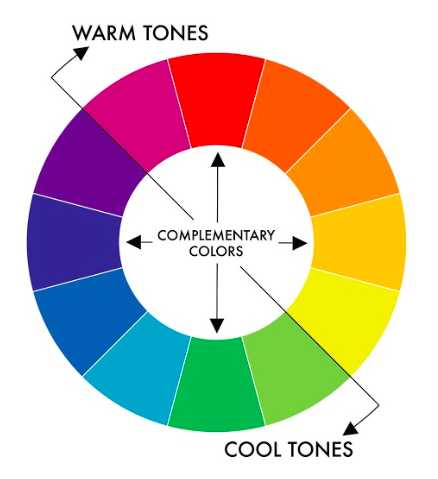
How to harness COLOR THEORY from art to make better color photographs:
ETERNAL RETURN to CREATIVE EVERY DAY >

Inspire your visual artistry with ETERNAL RETURN to CREATIVE EVERYDAY BOOK >
Color Theory 101
Colors: there are no definitive “rules” to what makes a good color photograph or not. But, there are certain principles, guidelines, and theories on how to make better color pictures.
COLOR WHEEL
For example, take the color wheel.
1. Warm vs Cool Tones
According to this theory, you want to contrast “warm” tones from “cool” tones.
2. Complementary Colors
Also, colors on the opposite sides of the color wheel (red vs green, orange vs blue) are “complementary colors”— colors that complement, or balance each other well:

Warm vs Cool Tones
Examples of some of my photographs that illustrate “warm” vs “cool” tones:



Complementary Colors
Blue and Orange/Red





Red vs Green



PRIMARY COLORS

Another theory in photography and color: that there are three “primary” colors:
- Red
- Yellow
- Blue

The best artist to study primary colors (red, yellow, blue) is Piet Mondrian, who distilled artistic composition to the primal basics:
























Believe it or not, yet, Piet Mondrian did know how to paint. Here are his earlier works; note how he integrated color theory into his work:









Anyways, we can learn to better integrate these primary colors into our photos, by focusing on one primary color at a time:
Red pictures









Yellow pictures











Blue pictures









Red, Yellow, Blue












Practical tips to apply color theory to your photography

1. To train your eyes, learn to shoot in color by only shooting JPEG.

The camera does a better job processing colors natively, as JPEG, in-camera when compared when you try to process RAW color pictures. It is true that shooting RAW will help you modify the colors of your pictures with more latitude, flexibility, and control — but shooting in JPEG will help train your eyes to see color in real life.

2. Focus on one color at a time:

Try to do a mini photo project on the primary colors of RED, YELLOW, and BLUE. For a day, only choose one of those primary colors. This will help your eyes build the SENSITIVITY of your retina to a specific color. So for one day, only shoot RED. Another day, only shoot BLUE. Another day, only shoot YELLOW. Try to simplify the scenes you photograph as much as possible.


3. Study colorful art

Look at a lot of colorful art when you’re not taking pictures, to better learn for yourself: “Which colors appeal to me the most?”

4. Trace, analyze, colorful art
The best way to understand color: deconstruct the work of your favorite color painters or artists. I made these with my iPad and Procreate app:


ETERNAL RETURN TO CREATIVE EVERYDAY

To inspire yourself more, pick up a copy of Eternal Return to CREATIVE EVERYDAY >

